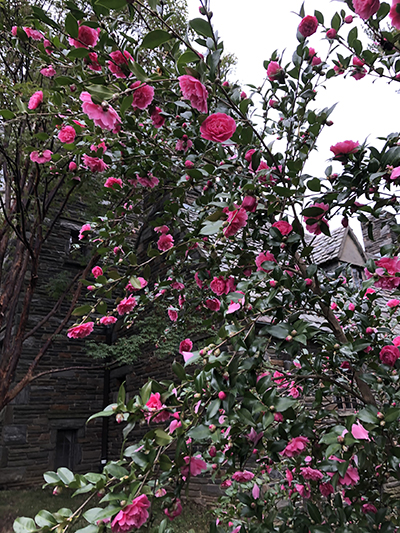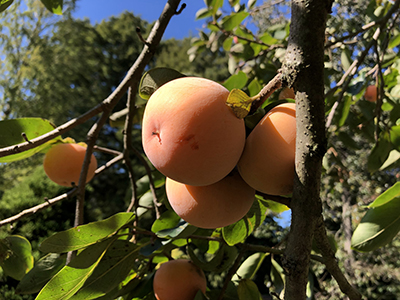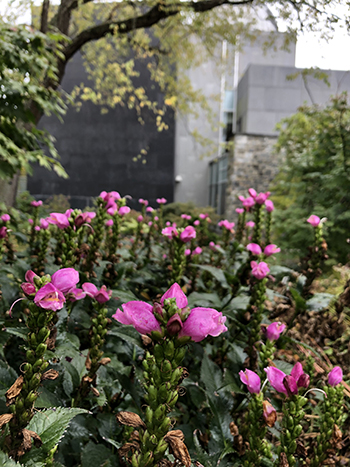
Plants of the Week: November 8

Fall-blooming camellias are in peak bloom, and this season has been especially floriferous! One standout is Camellia ‘Autumn Spirit’. Introduced by Camellia Forest, ‘Autumn Spirit’ is covered from tip to trunk in a multitude of bright pink peony-like flowers. The evergreen shrub also boasts a dense, yet open habit, early bloom time, and cold hardiness (zones 6 – 9). Now is a great time to explore the camellias behind Parrish Hall, in the Harry Wood Garden, and in the Camilla Collection. Photo credit: J. Coceano

Diospyros ‘Nikitskyana Bordovaya’ (Nikita’s gift™ persimmon) isn’t your typical persimmon. The cultivar is a cross between the North American species, D. virginiana, which imparts greater cold hardiness (to zone 5) and the Japanese variety, D. kaki, known for its larger fruit size. The result is a self-fertile tree that produces copious quantities of bright, reddish-orange, palm-sized fruit in October. Fruits are ready for consumption when soft and tender to the touch. Striking orange-yellow fall foliage adds an additional ornamental aspect to the deciduous tree. Find this cultivar in the Pinetum. Photo credit: J. Coceano

Chelone lyonii ‘Armtipp02’ (Tiny Tortuga™ turtlehead) is still in bloom! While the coming cold weather will soon see its flowering season end, the colony in the Harry Wood Garden has flower buds yet to open. This cultivar is shorter in stature compared to other Chelone varieties. Plants love wet sites/poor draining soils and need some shade. Fun fact: Chelone flowers have a unique botanical feature – a sterile stamen in addition to four fertile ones. The sterile stamen is helpful in identifying the various Chelone species. It is green in C. glabra, rose-tipped in C. lyonii, and white in C. obliqua. Photo credit: J. Coceano





Alan Kruza
Posted at 08:09h, 18 NovemberThanks Josh. I wasn’t aware of the stamen facts. I always learn something new at the Arboretum.
Robert Roggeveen
Posted at 10:40h, 22 NovemberYour comment on the Che line stamens reminds always to look closely – to embrace what we have “seen’” before and be ready to see what we have not seen.